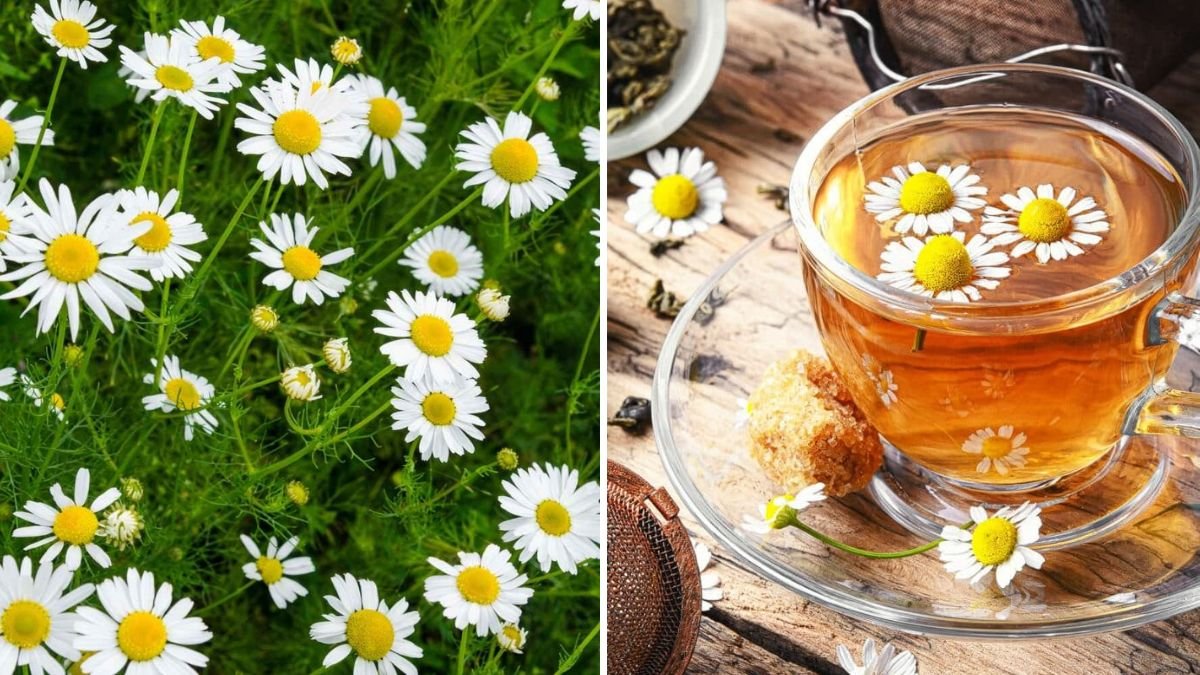Chamomile is a timeless herb cherished for its soothing teas, calming fragrance, and therapeutic properties. With delicate, daisy-like flowers and a gentle apple-like scent, chamomile adds both beauty and utility to gardens, pots, and even balconies. Its flowers are commonly used to make herbal teas, infusions, skincare products, and aromatic remedies. Growing chamomile is relatively easy, making it an ideal choice for beginner and experienced gardeners alike.
This guide provides detailed information on choosing varieties, planting techniques, soil preparation, care, harvesting, and using chamomile for teas and fragrance.
Why Grow Chamomile?
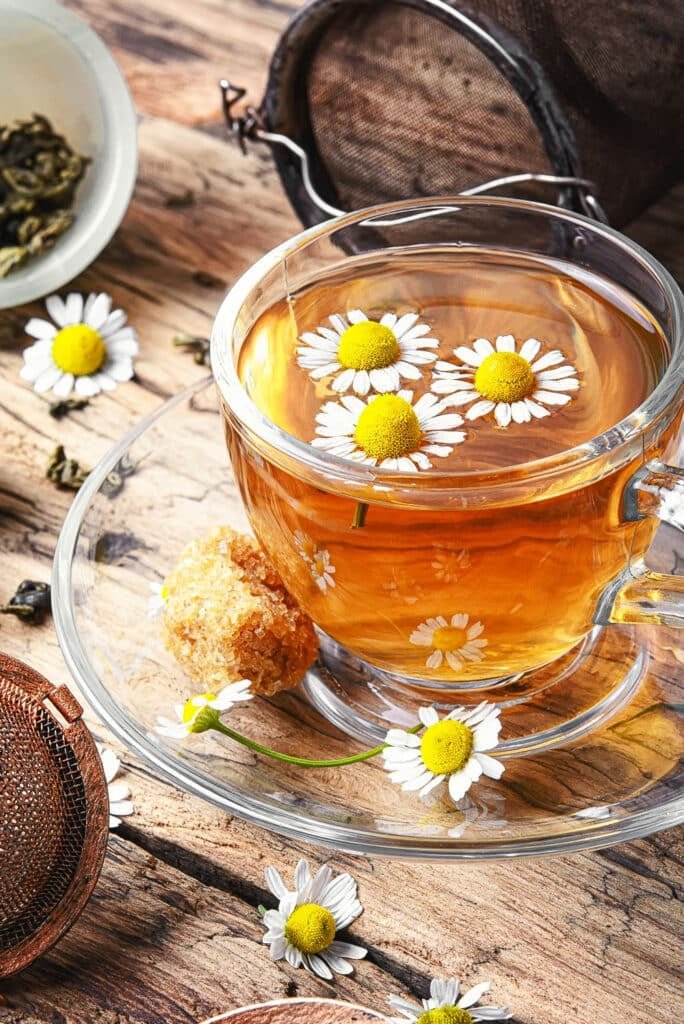
Chamomile offers multiple benefits beyond its charming appearance:
- Herbal Tea: Chamomile tea is known for promoting relaxation, aiding digestion, and supporting sleep.
- Fragrance: The gentle scent of chamomile enhances garden aroma and attracts pollinators like bees and butterflies.
- Medicinal Uses: Chamomile flowers have anti-inflammatory, antibacterial, and calming properties.
- Low Maintenance: Chamomile thrives with minimal care, tolerating poor soil and partial shade.
- Companion Planting: Chamomile improves the growth and flavor of nearby vegetables, herbs, and flowers.
Growing chamomile combines practical utility with aesthetic charm, making it a multifunctional garden plant.
Step 1: Selecting the Right Chamomile Variety
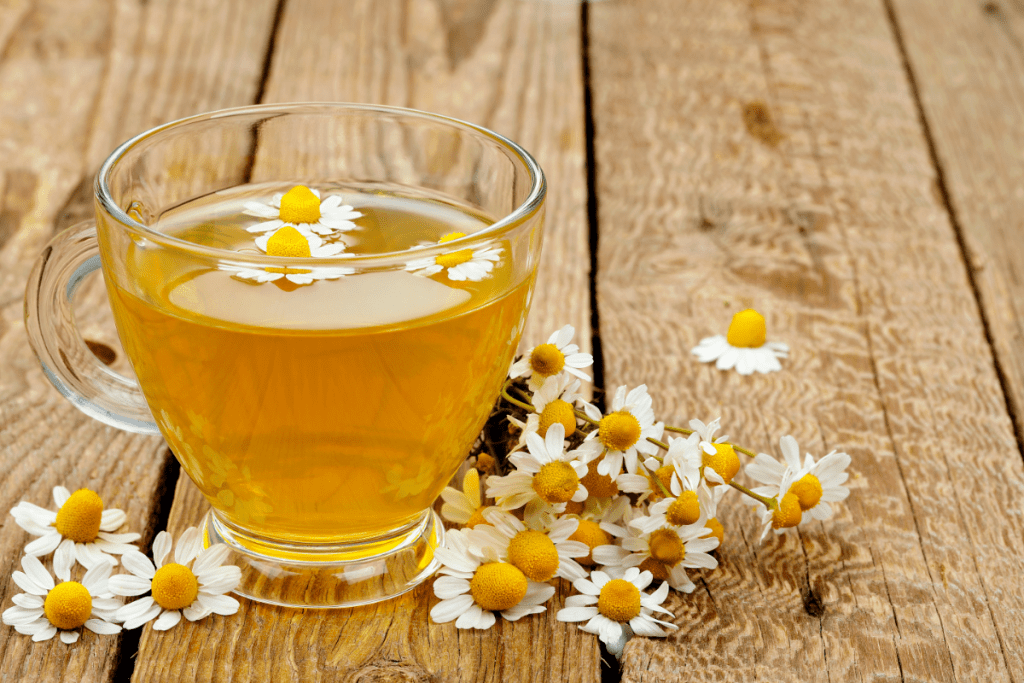
There are two main types of chamomile to grow:
- German Chamomile (Matricaria chamomilla):
- Annual herb with fine, feathery foliage and small, daisy-like flowers.
- Ideal for teas due to its strong flavor and high flower yield.
- Grows 12–24 inches tall.
- Roman Chamomile (Chamaemelum nobile):
- Perennial with creeping growth, making it suitable as a ground cover.
- Flowers are less potent than German chamomile but highly fragrant.
- Stays low, around 6–12 inches in height.
Choose a variety based on purpose and garden space—German chamomile for herbal teas, Roman chamomile for fragrance and ornamental use.
Step 2: Choosing the Ideal Location
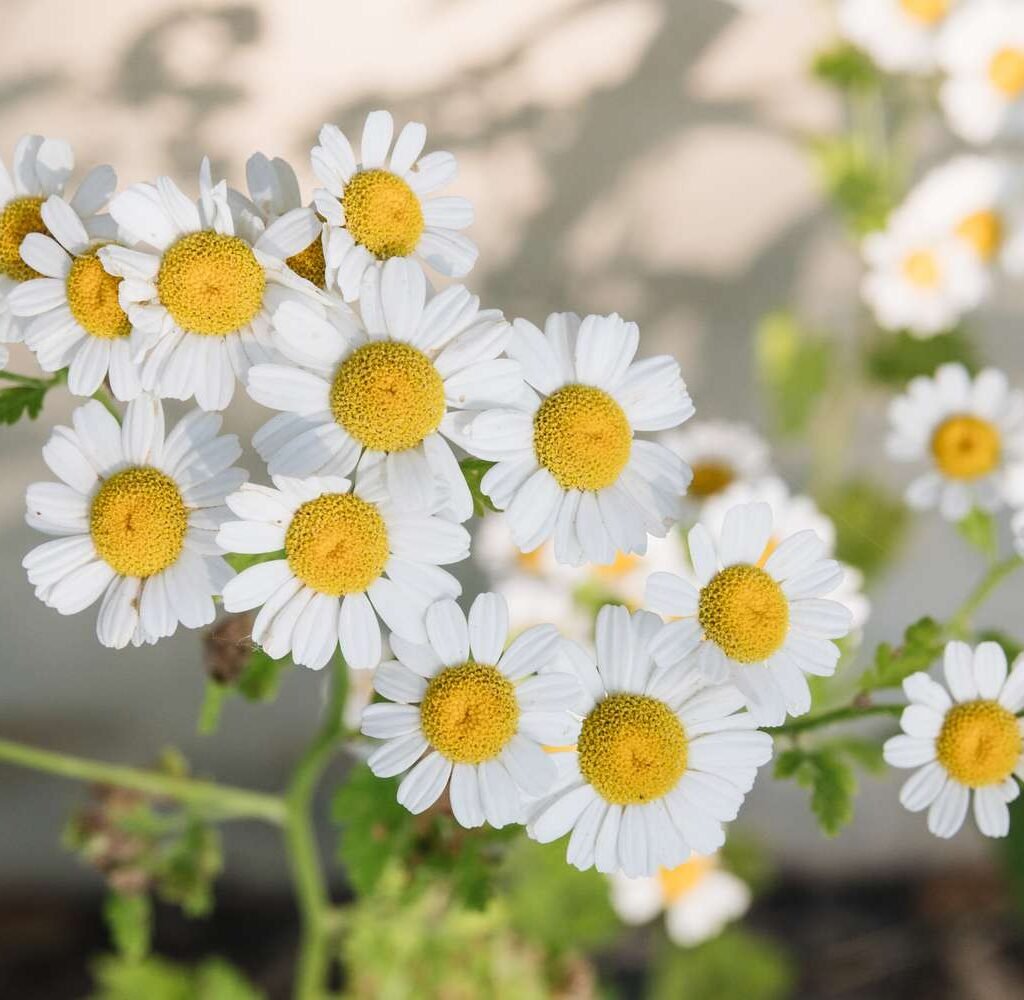
Chamomile thrives in sunny locations with well-draining soil:
- Sunlight: 4–6 hours of direct sunlight for optimal growth. Partial shade is acceptable, especially in hotter climates.
- Soil: Prefers sandy or loamy soil with good drainage. Avoid heavy clay soils, which may retain water and cause root rot.
- Containers: Chamomile grows well in pots, window boxes, and raised beds, making it suitable for urban gardening.
- Spacing: Space plants 6–12 inches apart to allow air circulation and prevent overcrowding.
The right location ensures healthy foliage, abundant blooms, and potent aroma.
Step 3: Soil Preparation
Healthy soil is key to chamomile success:
- Loosen Soil: Dig 6–8 inches deep and remove weeds and rocks.
- Amend Soil: Add compost or organic matter to enrich nutrient content while maintaining drainage.
- pH Level: Chamomile prefers slightly acidic to neutral soil (pH 6–7).
- Raised Beds: In wetter climates, consider raised beds or containers to prevent root rot.
Well-prepared soil supports strong roots and abundant flowering, crucial for both tea-making and fragrance.
Step 4: Planting Chamomile
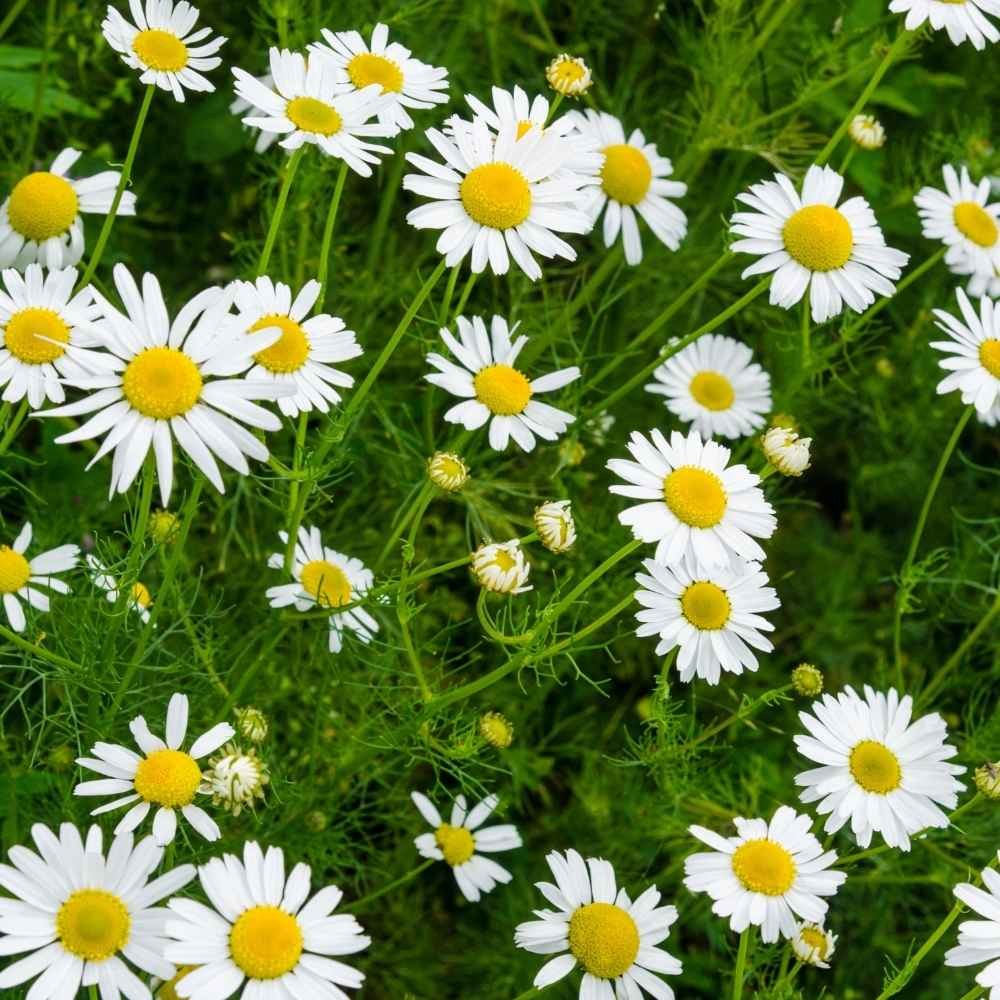
Chamomile can be grown from seeds, seedlings, or divisions:
- From Seeds:
- Sow seeds directly outdoors in spring after the last frost.
- Press seeds lightly into the soil; do not cover them completely, as they need light to germinate.
- Germination occurs in 7–14 days at temperatures of 60–70°F (15–21°C).
- From Seedlings:
- Transplant seedlings once they have 2–3 true leaves.
- Water lightly and maintain spacing to prevent overcrowding.
- From Divisions (Roman Chamomile):
- Divide established clumps in spring or fall.
- Replant divisions in prepared soil for quicker growth.
Proper planting ensures healthy root development and vigorous flowering.
Step 5: Watering and Fertilization
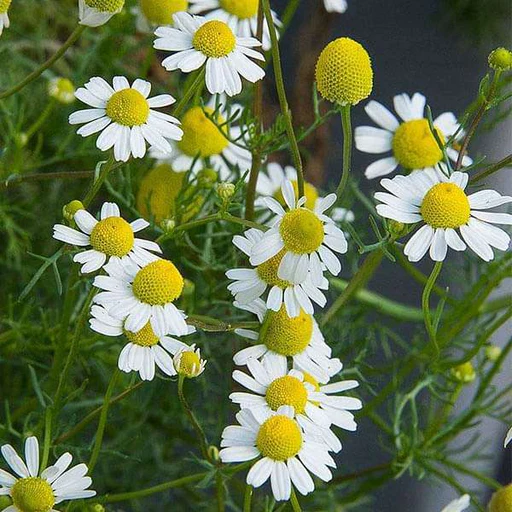
Chamomile is relatively drought-tolerant but benefits from consistent care:
- Watering:
- Keep soil evenly moist during germination.
- Once established, water moderately, allowing soil to dry between watering.
- Avoid overwatering, as it can lead to fungal diseases.
- Fertilization:
- Chamomile prefers low fertility; excessive fertilizer may reduce flower production.
- Use compost or a mild balanced fertilizer sparingly during the growing season.
Balanced watering and light fertilization ensure fragrant blooms and healthy foliage.
Step 6: Pruning and Maintenance
Regular maintenance enhances growth and prolongs bloom:
- Deadheading: Remove spent flowers to encourage continuous flowering.
- Trimming Foliage: Light trimming prevents legginess and maintains compact growth.
- Weed Control: Keep surrounding soil free of weeds to reduce competition for nutrients and water.
- Pest Management: Chamomile is relatively pest-resistant but may occasionally attract aphids; use neem oil or soapy water as a natural remedy.
Consistent care ensures long-lasting blooms and a tidy, aromatic garden display.
Step 7: Harvesting Chamomile
Harvesting at the right time preserves aroma and flavor:
- Flowers: Pick chamomile flowers in the morning when dew has dried but before the sun becomes too hot.
- Frequency: Harvest throughout the blooming season to encourage new flowers.
- Drying:
- Spread flowers on a paper tray in a cool, dark, and well-ventilated space.
- Store dried flowers in airtight containers away from light and moisture.
- Leaves: While less commonly used, leaves can also be harvested for fragrance or culinary use.
Proper harvesting techniques maximize potency for teas and aromatic purposes.
Step 8: Using Chamomile for Teas and Fragrance
Chamomile is versatile and can be used in multiple ways:
- Chamomile Tea:
- Use 1–2 teaspoons of dried flowers per cup of hot water.
- Steep 5–10 minutes, strain, and enjoy calming, aromatic tea.
- Optionally, add honey or lemon for enhanced flavor.
- Aromatic Use:
- Fresh or dried flowers can be added to sachets, potpourris, or herbal pillows.
- Roman chamomile is ideal for garden borders due to its fragrant foliage.
- Skin Care:
- Chamomile infusions can be used as gentle facial toners or added to baths for a soothing effect.
Growing chamomile allows gardeners to combine functional utility with sensory enjoyment, providing multiple practical and decorative uses.
Step 9: Companion Planting with Chamomile
Chamomile is an excellent companion plant:
- Enhances Growth: Promotes the growth and flavor of vegetables like cabbage, onions, and herbs such as parsley.
- Attracts Beneficial Insects: Bees, hoverflies, and predatory wasps are drawn to its flowers, helping with pollination and natural pest control.
- Protects Plants: Chamomile can improve overall garden health and act as a natural pest deterrent.
Strategic companion planting maximizes both garden productivity and aesthetics.
Step 10: Winter Care for Chamomile
Chamomile requires some protection in colder climates:
- German Chamomile: As an annual, it dies after flowering; collect seeds for next season.
- Roman Chamomile: Perennial type may need mulching or container relocation indoors to survive frost.
- Indoor Cultivation: Both types can be grown in pots indoors during winter for continuous aroma and small-scale harvesting.
Proper winter care ensures perennial chamomile survives and provides flowers year after year.
Benefits of Growing Chamomile
- Therapeutic Use: Chamomile tea and infusions promote relaxation and wellness.
- Garden Aesthetics: Adds soft, daisy-like flowers and feathery foliage.
- Pollinator-Friendly: Attracts bees and other beneficial insects.
- Low Maintenance: Tolerates moderate drought and poor soil conditions.
- Sustainable Gardening: Reduces dependence on commercial herbs and enhances homegrown resources.
Chamomile is both a functional and decorative herb, enriching gardens in multiple ways.
Conclusion
Growing chamomile is a rewarding experience for gardeners seeking both beauty and utility. From selecting the right variety and preparing the soil to planting, watering, and harvesting, every step contributes to healthy, fragrant blooms. Whether you grow German chamomile for aromatic teas or Roman chamomile for ground cover and fragrance, this herb offers calming, culinary, and ornamental benefits.
With careful care, companion planting, and seasonal attention, chamomile can become a central feature in your garden, providing continuous enjoyment, wellness benefits, and natural fragrance throughout the growing season. By cultivating this versatile herb, gardeners create a sustainable, visually appealing, and multi-purpose garden space that enhances both lifestyle and landscape aesthetics.
